Background: This is a small collection of Nazi political art. Hitler had said “No state lasts longer than the documents of its culture,” and these artworks were intended to glorify the party and its activities. Nazi war art and portraits of Adolf Hitler are available elsewhere on the German Propaganda Archive. See also a page of art on the theme of 9 November, the anniversary of the Beer Hall Putsch.
The source: Various books and periodicals.
Nazi Political Art

The Nazis came to glorify the Kampfzeit, the period before 1933 when the party fought for power. This painting shows an S.A. Man in a meeting hall battle.
Source: Deutschland erwacht (Hamburg: Cigaretten-Bilderdienst Hamburg-Bahrenfeld, 1933).
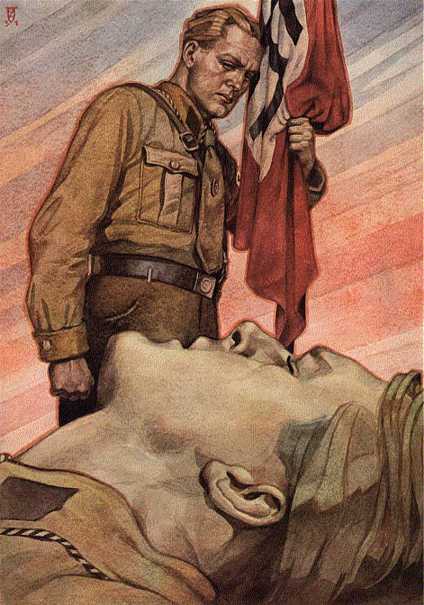
Here a Nazi looks down on a fallen comrade.
Source: Deutschland erwacht (Hamburg: Cigaretten-Bilderdienst Hamburg-Bahrenfeld, 1933).
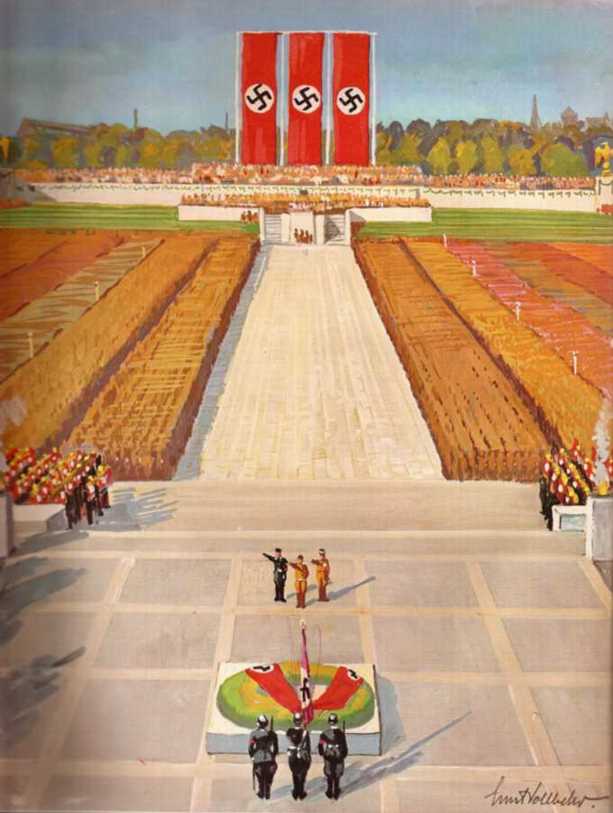
A painting of the 1934 Nuremberg Rally.
Source: The 1934 volume on the Nuremberg Rally, edited by Julius Streicher.
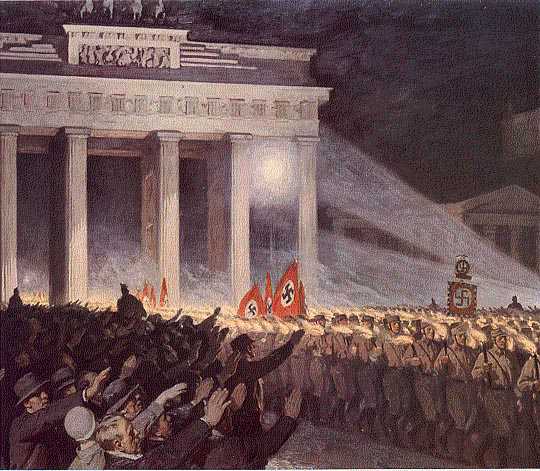
This painting by Arthur Kampf commemorates the Nazi seizure of power on 30 January 1933. There was a huge torchlit procession that evening in Berlin.
Source: Die Kunst im Dritten Reich, January, 1938.
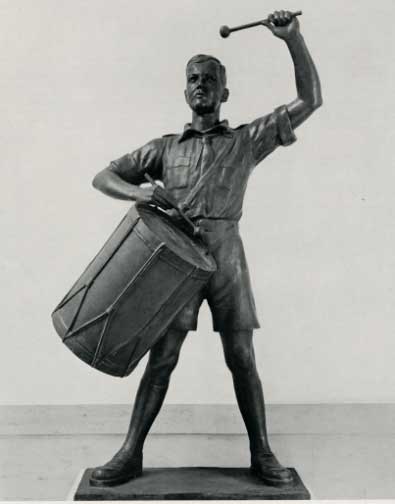
This bronze sculpture by Anni Spetzler-Proschwitz depicts a drummer boy of the Hitler Youth.
Source: Die Kunst im Dritten Reich, August, 1938.
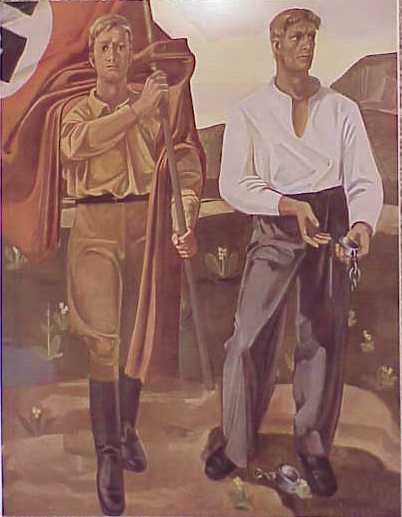
This is part of a painting by Rudolf Hermann Eisenmemger titled “Austria Comes Home.” It depicts an Austria freed from chains marching alongside the swastika flag. The event portrayed is the Anschluß with Austria in 1938.
Source: Die Kunst im Deutschen Reich, March 1941.
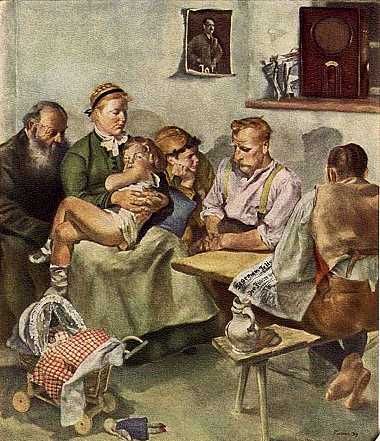
The title of this painting by Paul Padua, dated 1939, is “The Führer Speaks.” The family from old to young is gathered round the Volksempfänger, an inexpensive radio receiver, listening to Hitler speak. His picture is on the wall. The religious parallels are rather plain.
Source: Hans Hagemeyer, Gestalt und Wandel des Reiches (Berlin: Im Propyläen Verlag, 1944).
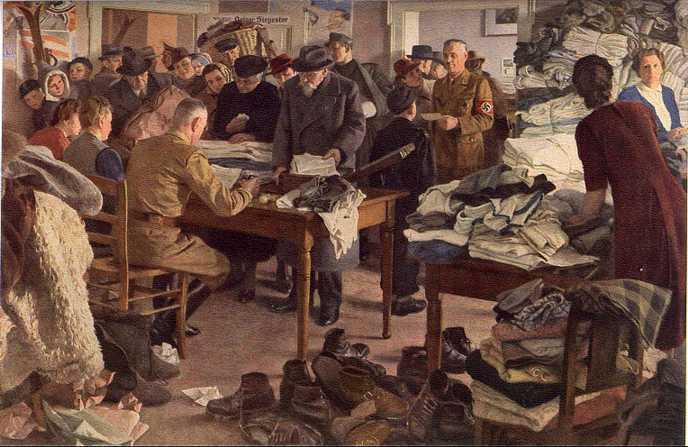
This is a section of a larger painting by Adolf Reich titled “The Wool Collection at a Munich Local Group.” It displays a drive collecting woolen goods for soldiers during World War II. It is an effort at displaying the Nazi idea of Volksgemeinschaft, the people’s community. Young and old work together for the good of Greater Germany.
Source: Kunst dem Volk, September 1942.

